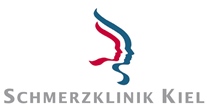behaviour rules
In contrast to the treatment of migraines and tension-type headaches, non-drug therapy strategies are of minor importance for cluster headaches. Although the exact nature of the relationship between cluster headaches and nicotine consumption is still unclear, nicotine consumption is considered to be the only factor that the affected person can influence to prevent episodic cluster headaches from progressing into the chronic form.
Rules of conduct for cluster headaches
Sensible:
- Avoiding trigger factors during active cluster periods (alcohol, nitro preparations, staying at higher altitudes)
- General avoidance of nicotine consumption
Ineffective:
- Relaxation procedures
- Stress management techniques
- Physiotherapeutic or physical measures
- acupuncture
Attack therapy
Oxygen at Cluster
In the majority of patients, opioid and non-opioid analgesics are ineffective in treating cluster headache attacks. Only inhalation of 100% oxygen and subcutaneous injection of sumatriptan 6 mg have proven to be reliably effective.
In attack therapy, inhaling pure oxygen through a face mask is particularly gentle and effective. Correct handling and information are important. A portable oxygen cylinder may be prescribed. An effective alternative is Sumatriptan Inject, which can be injected under the skin using an auto-injector.
- Oxygen (inhalation of 100% O2, at least 10l/min over 10 minutes with a face mask)
- Sumatriptan (6 mg sc)
2nd choice
- Sumatriptan (20 mg nasal)
- Zolmitriptan (2.5 – 5 mg oral, 5 mg nasal)
III. Choice
- Lidocaine (spray 4% solution into the nostril on the pain side)
oxygen
Inhalation of 100% oxygen at a dosage of 7 l/min. over about 15 minutes relieves or ends attacks within 15 minutes in about 2/3 of patients. It is particularly effective at the beginning of the attack. The use of a face mask is recommended for patients with nasal congestion or rhinorrhea. The mechanism of action appears to be acute vasoconstriction of intracerebral vessels. The advantages of oxygen are its extremely good tolerability, the lack of interactions with substances used to prevent cluster headaches, and the unlimited repeatability in the event of new attacks during the same day. The most important disadvantage despite the availability of portable oxygen cylinders is their limited practicality. In addition, unlike sumatriptan, oxygen has no prophylactic effect immediately after successful use.
Sumatriptan sc
Subcutaneous administration of sumatriptan 6 mg using an autoinjector or prefilled syringe is by far the most effective treatment for cluster attacks. Approximately 75% of the treated attacks are over within 15 minutes, and the effects often begin after just a few minutes. In long-term studies, the excellent effectiveness lasts throughout the entire period of use. Drug-induced headaches were not observed. Tolerability is generally very good in cluster patients, even in the case of described overdoses of up to 8 injections within 24 hours. Theoretically, the application is limited to 2 x 6 mg within 24 hours. It should be noted that sumatriptan must not be combined with methysergide or ergotamine tartrate to prevent cluster headaches. The general contraindication to the use of sumatriptan should also be noted.
The nasal dosage forms of sumatriptan at 20 mg and zolmitriptan at 5 mg were also shown to be effective in controlled studies. However, compared to sumatriptan sc, the onset of action is significantly delayed and the overall effectiveness is lower. Instillation of 4 puffs of a 4% lidocaine solution into the nostril of the affected side with the head bent back 45° and rotated 30° to the painful side can provide pain relief in individual cases. However, in a larger open case series the effect was poor. The onset of action also appears to be delayed compared to sumatriptan sc and oxygen.


